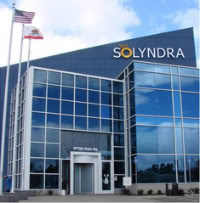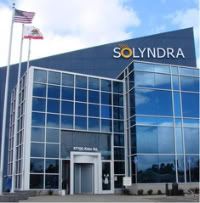Solyndra – Renewable Energy Cinderella Story


There are several features of this technology and its implementation that have come together to form a highly differentiated product that is making a real name for itself around the world in a period of time that is, relative to other similar ventures, unbelievably short. First, because wind blowing through the elements tends to hold the installation on the roof (rather than blow it way) the system can be put in place very easily, quickly, and inexpensively with no penetration of the rooftop itself. Also, CIGS deployed in cylindrical elements results in 25% to 100% more power than conventional thin-film technology installed onto equivalent roofs.
As a business consultant, I’ve lived through dozens of stories of venture-capitalized start-ups, and I have to say that Kelly’s narration of the company’s history makes it sound – to me at least — like one of the smoothest in VC history. The company received its initial venture funding in 2005 and went about the business of building prototypes, working with the National Renewable Energy Laboratory (NREL) which provided the equipment and technology for deposition. Soon the technology was demonstrated, the technical milestones were reached, beta customer feedback was positive – and actually serendipitously helpful; customers would often provide constructive input that none of the principles had thought of — e.g., “Do you realize that this could be used for — (some new application)?”
But the good news goes on: Solyndra took over a facility that Seagate (the hard disk-drive manufacturer) had abandoned when they took their operations overseas, and smoothly completed its third-party testing, validating not only the energy efficiency of its products, but also their seismic and wind readiness. By mid-2008 the first volume customer shipments were coming off the loading docks, and the company has grown in revenue in every subsequent quarter.
Looking for some plot twist or at least some conflict to make this story more interesting, I asked if investors getting antsy for a liquidity event, like an IPO on an acquisition by a publicly traded company. “No,” Kelly says, “They’re wonderfully patient. They know we’re in this to make a real difference against the reality of global warming, and that will require some time for growth. To give you an idea of their patience, we received a nine-figure from the DoE which required us to put up 27%. Even in this financial climate, our investors made sure this happened.”
Kelly Truman and I don’t know one another outside of this one-time encounter, and so I didn’t feel it was my place to ask anything else. When the interview was over, I politely thanked him and hung up. But I have to admit that I was wondering: Do his kids have naturally straight teeth? Are they headed for Ivy League colleges on full academic scholarships? I somehow feel that I want to hang out with Kelly, as he’s obviously doing a great number of things right.
I’m kidding here, of course. What I really mean is this: congratulations.

so neat
Lord Kelvin was a scientist who lived from 1824 to 1907. He did much of the early work to make electricity and refrigeration practical. The Kelvin temperature scale was named after him. Lord Kelvin stated that knowledge that cannot be expressed in numbers is not knowledge; it may be the beginning of knowledge, but it is of a meagre and unsatisfactory sort.
One of the things that bothers me about renewable energy, including solar, is that we are not provided with numbers. For example, people promoting solar power never tell us how much land area would be required to provide sufficient power for our entire country. They do not consider that other countries have a population density far greater than ours. For example, China has a population density 4.3 times greater than ours, and India has a population density 11 times greater than ours. The two combined have a population of about 2 billion. Considering their population densities and limited land available to provide solar power, could they get adequate energy from solar power? Could we? How much would it cost? And how would energy be stored to provide power when the sun is not shining?
WE NEED NUMBERS, not simply fuzzy statements that make us feel good. Where are the numbers?
Frank: I don’t agree with your compaint about the numbers; they’re pretty each to find. Here are a few stats on solar plants in the deserts of the southwestern US. http://en.wikipedia.org/wiki/Solar_power_plants_in_the_Mojave_Desert. Actually, the math and physics of all this is quite easy; the earth receives 6000 times more incident energy from the sun each day than we use. What makes this interesting is that the engineering, materials science, etc. is changing (improving) every day.
Craig,
The fact that “the earth receives 6000 times more incident energy from the sun each day than we use” is TOTALLY MEANINGLESS. Most of the earth is covered with water; we cannot convert to electricity the solar energy that the water receives. Much of the earth is covered with clouds, and concentrating solar systems cannot function except in direct sunlight. The actual amount of area that can be used to convert solar energy into electricity is very limited, and the maximum possible conversion efficiency is only about 30%; the actual efficiency is lower.
The statistics in the wiki article DID NOT provide useful data. What we need to know is EXACTLY how much vacant land is available on which solar power plants can be constructed, EXACTLY what our power requirements are, and EXACTLY how much power can be generated per unit of area available. The amount of power that can be generated per unit of area depends on latitude, cloud cover, and other factors. Those data WERE NOT provided by the article.
Environmental organizations talk about how fragile desert environments are, yet deserts are the very places where solar generation of electricity works best. Recently California senator Feinstein objected to a solar plant in the Mojave Desert in CA which would cover 60 square miles of desert yet, according to one article I read, we’d have to cover 10,000 square miles of land to generate sufficient electricity for our needs.
Even if we could provide sufficient electricity here in the U.S. with solar power, more densely populated countries, of which there are many, definitely could not. Thus, even if we totally eliminated the burning of fossil fuels, it would make little difference for the global climate if China and India continued to increase their use of fossil fuels.
Consider that all types of solar energy require water to wash off the dust, bird droppings, etc., to maintain efficiency. The most efficient type of solar plant is the power tower system, but even it suffers from an efficiency loss if water is not available to cool the condensers. And in desert areas, water tends to be scarce.
The only source long-term adequate source of energy is nuclear. The arguments against nuclear power ignore the fact that the technology has greatly advanced during the last 30 years, that there are many different reactor types, and that the old objections to nuclear power no longer apply.